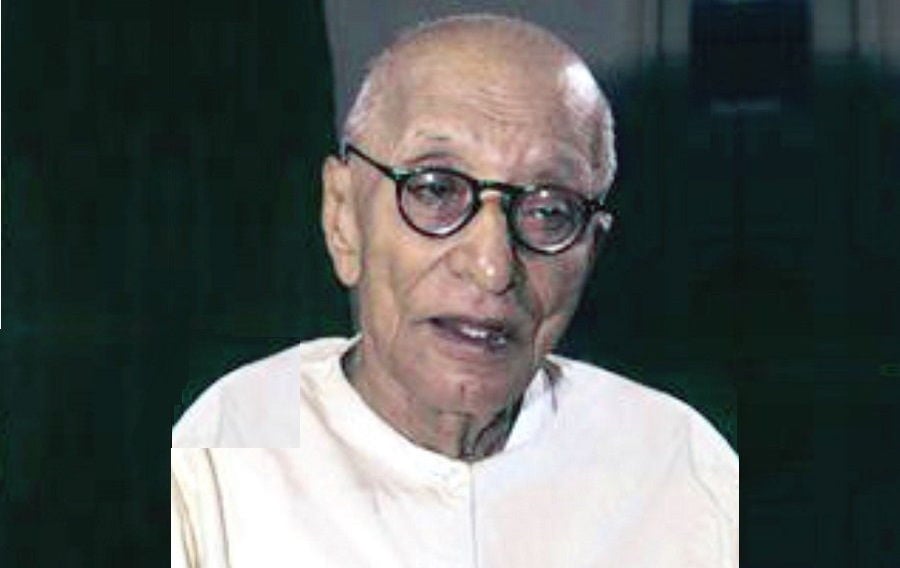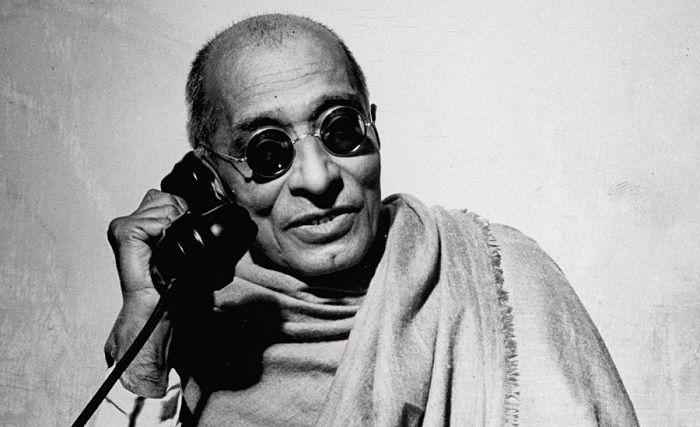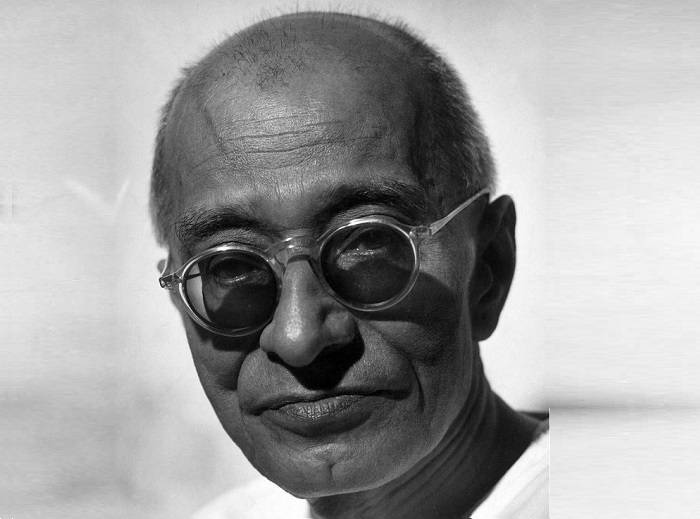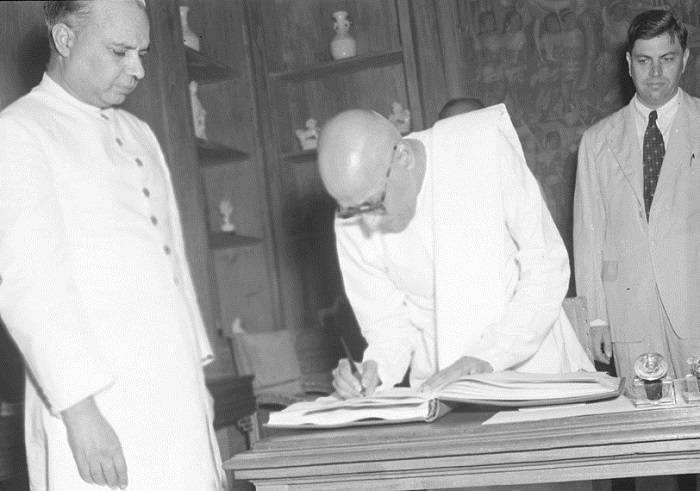Fast Facts
Born: 10 December 1878
Place of Birth: Thorapalli Village, Krishnagiri District, Tamil Nadu
Parents: Chakravarti Venkataryan (father) and Chakravarti Singaramma (mother)
Spouse: Alamelu Mangalamma
Children: Narasimhan, Krishnaswamy, Ramaswami (sons) Lakshmi, Namagiri Ammal (daughters)
Education: R.V. Government Boys Higher Secondary School, Hosur, Central College, Bangalore, Presidency College, Madras
Political Association: Indian National Congress, National Democratic Congress, Swatantra Party
Political Ideology: Right-wing, liberal, pacifist
Publications: ‘Siraiyil Tavam’, ‘Chakravarti Thirumagan’ (Tamil) ‘Bhagwad Gita’, ‘Ramayana’, ‘Mahabharata’, Upanishads’, ‘Bhaja Govindam’ (Translations to English), ‘Hinduism, Doctrine and Way of Life’, ‘Words of Freedom Ideas of A Nation’, ‘Avvaiar – A Great Tamil Poetess’ (English)
Awards: Bharat Ratna (1954), Sahitya Akademi Award (1958)
Death: December 25, 1972

Image Credit : https://www.thefamouspeople.com/profiles/c-rajagopalachari-5304.php
Introduction
Chakravarti Rajagopalachari was an eminent Indian politician, freedom fighter, statesman and lawyer. He was the last Governor-General of India and the first Indian to occupy the post. During his illustrious career, Rajagopalachari headed the Indian National Congress and acted as Premier of the Madras Presidency, Governor of West Bengal, the Union Minister for Home Affairs, and the Chief Minister of the state of Madras. One of the first recipients of Bharat Ratna, the nation’s highest civilian award, he also founded the Swatantra Party. A keen observer of world affairs, he was a strong advocate of world peace, disarmament and non-proliferation of nuclear weapons.
Early Life
Rajagopalachari was born on 10 December 1878 in Thorapalli Village, Madras Presidency as the third son of Chakravarti Venkataryan, the village munsif, and Chakravarti Singaramma. As a child, he was very sickly and his parents constantly worried about him. He first attended the village school but at the age of five, he enrolled at R.V. Government Boys Higher Secondary School at Hosur after his family moved residence. In 1891, he passed his matriculation examination and in 1894, obtained his Bachelor of Arts degree from Central College, Bangalore. Thereafter, he enrolled at the Presidency College, Madras to study law and passed out in 1897. The same year, he married Alamelu Mangalamma; the couple had three sons, Narasimhan, Krishnaswamy, and Ramaswami, and two daughters, Lakshmi and Namagiri Ammal…

Image Credit : https://www.thefamouspeople.com/profiles/c-rajagopalachari-5304.php
Role in Indian Independence Movement
In 1900, Rajagopalachari started practicing law in Salem and the next year became a member of the Salem municipality. He joined the Indian National Congress and attended the 1906 Calcutta session as well as the Surat session, the next year. In 1917, he came into limelight with his defence of P. Varadarajulu Naidu, an independence activist, against charges of sedition.
In 1919, Rajagopalachari actively participated in the agitations against the draconian Rowlatt Act. He gave up his law practice and became a follower of Mahatma Gandhi’s Non-Cooperation movement. In 1921, he became the General Secretary of the Congress Party and was elected to its Working Committee. Following the split of INC in 1923, Rajagopalachari became heavily involved in the ‘Vaikom Satyagraha’— movement against untouchability—and also became Civil Disobedience Enquiry Committee member.
Rajagopalachari lent his support to Gandhi’s Dandi march in 1930. He broke the salt law along with activist Sardar Vedaratnam at Vedaranyam, near Nagapattinam and was arrested by the British. He became the president of the Tamil Nadu Congress Committee and persuaded the Indian National Congress to participate in the general elections in 1937.
Premier of Madras Presidency
Following the 1937 elections, Congress Party came to power in the Madras Presidency and C Rajagopalachari became the Premier of the Madras Presidency. Among his first notable actions was the issuance of the Temple Entry Authorization and Indemnity Act 1939 that permitted Dalits and Shanars to enter Hindu temples. To ease farmer debt, he also introduced the Agricultural Debt Relief Act in 1938. However, his decision to ban alcohol sales and levy additional sales tax and impose austerity measures that involved the closure of hundreds of primary schools run by the government backfired. He ran into further controversy by making Hindi compulsory in educational institutions. Following the outbreak of the Second World War and the Viceroy’s decision to declare war on Germany without India’s consent, the Congress ministers, including Rajagopalachari, resigned en masse in protest.

Image Credit : https://www.thefamouspeople.com/profiles/c-rajagopalachari-5304.php
Second World War
In accordance with the Defence of India rules, in December 1940, Rajagopalachari was arrested for his protest against the declaration of war and sentenced to one-year in prison. At this point in time, his stance on the Britain’s war against Germany changed. He also advocated dialogue with the British and opposed the Quit India Movement. He reasoned that opposing British rule would actually be counterproductive at a time when India could possibly be invaded. His advocacy of entering into a dialogue with the Muslim league that was demanding the partition of the country became a matter of concern. Rajagopalachari resigned from the Congress Party over various disagreements over Madras Congress legislative party resolutions and differences with K. Kamaraj, the leader of the Madras Provincial Congress.
As a senior statesman, Rajaji initiated discussions between Gandhi and Jinnah regarding the partition. His suggestion that a district could choose to become a part of any of the two countries with an “absolute majority” threshold of 55% triggered a massive debate among the nationalists. Jawaharlal Nehru picked Rajagopalachari to serve as the Minister for Industry, Supply, Education, and Finance from 1946 to 1947 in his interim government.
Governor of West Bengal
With India and Pakistan attaining independence, Bengal split into two, and Rajagopalachari was appointed as the first governor of West Bengal even though he was disliked by the Bengalis for his censure of Subhas Chandra Bose during the Congress session of 1938. Rajagopalachari declared that his priority was to deal fairly and firmly with both Hindus and Muslims so that the state could have the peace and stability. He also vehemently opposed the proposal to include certain areas of Orissa and Bihar into West Bengal fearing that it would aggravate the already simmering sentiments of the people.
Governor General of India
When Governor-General Lord Mountbatten went on leave to attend the wedding of Prince Philip and Queen Elizabeth in London, Rajagopalachari served as the Acting Governor-General of India. From November 10 to 24, 1947, Rajaji stayed in the viceroy’s palace but led a very austere life. Mountbatten was very impressed with him and made Rajaji his second choice after Vallabhbhai Patel to succeed him after he departed India in June 1948. With both Nehru and Patel, himself disagreeing with Mountbatten’s first choice, it was Rajagopalachari who served as the last Governor-General of India, the only Indian to ever hold the office. He held the office from June 1948 to 26 January 1950, when India became a republic. Backed by Nehru, he was tipped to become India’s first president, however, opposition by a section of North Indians in the INC ensured his withdrawal.

Image Credit : https://scroll.in/article/860937/remembering-c-rajagopalachari-misguiding-people-in-order-to-get-power-should-never-be-our-line
Minister in Nehru Cabinet
Rajaji was elected from Madras to the Constituent Assembly and in 1950, was invited by Nehru to join his cabinet. In the initial days he had no portfolio but after Patel’s demise on 15 December 1950, he became the Home Minister. However, in less than a year, it was evident that there were sharp differences of opinion between him and Nehru on various issues of domestic and foreign policy. Tired of always being overruled by Nehru, Rajagopalachari resigned and returned to Madras.
Chief Minister of Madras State
Following the 1952 elections in Madras, no party got clear majority and the-then Madras Governor Sri Prakasa appointed Rajagopalachari as the Chief Minister after nominating him to the Madras Legislative Council. Rajagopalachari managed to prove his majority by getting some opposition members to join the Indian National Congress. During his tenure, a powerful movement for a separate Andhra State began that culminated in the carving out of the Andhra state from the Telugu-speaking districts of Madras on 1 October 1953, with Kurnool as its capital.
Other decisions that affected the economy and social fabric of Madras included the end to rationing of sugar, measures to regulate the running of universities, reduction in the hours of formal schooling for elementary school students. The last move was heavily criticized and ultimately led to the resignation of Rajagopalachari as Chief Minister on 13 April 1954 after much drama and politics.

Image Credit : https://commons.wikimedia.org/
Split from Congress
In January 1957, Rajagopalachari resigned from the Indian National Congress and established the Congress Reform Committee (CRC) with some other dissidents. It contested the 1957 state assembly elections and won 13 seats to emerge as the second-largest party in Madras. To balance the increasing leftist tendency of the INC, Rajaji along with other political luminaries and resentful heads of the former princely states established the right-wing Swatantra Party that stood for equality and opposed government interference and control over the private sector. The Swatantra Party won six seats in Madras state assembly elections and 18 in the Lok Sabha elections of 1962.
Later Years & Death
The government of India had adopted Hindi as the country’s official language but allowed a 15-year transition time for the non-Hindi areas by making a provision for English to be on par with Hindi. As the deadline of 26 January 1965 loomed, there were violent anti-Hindi protests in Madras State. Critical of the decision, Rajaji reversed his earlier support for Hindi and recommended discarding the decision at the Madras State Anti-Hindi conference in Tiruchirapalli on 17 January 1965.
Active even at the age of 88, Rajagopalachari forged an alliance between the Dravida Munnetra Kazhagam, the Swatantra Party, and the Forward Bloc to defeat the Congress Party in the February 1967 Madras Legislative Assembly elections. The Swatantra Party also won 45 seats in the 1967 Lok Sabha elections to emerge as the single-largest opposition party.
In 1971, the Swatantra Party withdrew its support of the state government as it was opposed to prohibition being relaxed to increase state revenues. It joined a coalition of Congress (O), Jan Sangh, and the Samyukta Socialist Party to form the National Democratic Front. However, it fared badly in the 1971 Indian general elections, and the Swatantra party became marginalised both at the Centre and in Tamil Nadu.
On 17 December 1972, Rajagopalachari was admitted to the Government Hospital, Madras suffering from dehydration, uraemia, and a urinary infection. He died on 25 December 1972, at the ripe age of 94.


